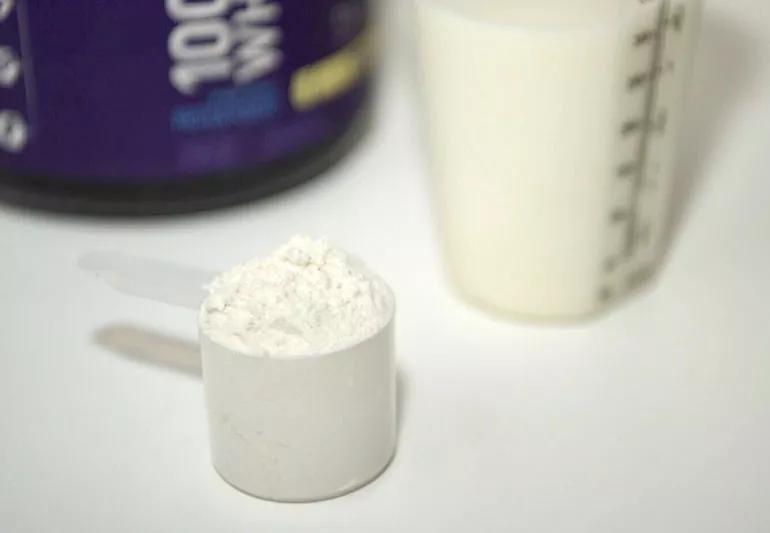7 tips to help you tailor your protein use

Protein powders are a quick way to help ensure that your body is nourished and satisfied. People use them for a variety of reasons — to lose weight, to improve sports performance, build muscle mass and for overall wellness.
Advertisement
Cleveland Clinic is a non-profit academic medical center. Advertising on our site helps support our mission. We do not endorse non-Cleveland Clinic products or services. Policy
But look around and the protein powder options are endless. So how do you know what type is best for your personal health goals?
It’s important to know the difference between available protein powders as well as how they stack up against whole food protein sources, says registered dietitian Kate Patton, MEd, RD, CSSD, LD.
You can meet your body’s daily protein requirements whether you drink shakes or eat only whole foods. However, they don’t offer equal nutrition.
What you may find surprising is that shakes generally contain fewer nutrients than whole foods. For that reason, shakes may help you lose weight, but whole foods can offer a bigger nutritional punch.
Whey protein is one of the most commonly used proteins and is best for day-to-day use. It contains all of the essential amino acids and is easily digested. It helps boost energy and can reduce stress levels.
Whey isolates and concentrates are best to use after a workout.
Soy protein is another common choice. It helps reduce high cholesterol and can ease symptoms of menopause for some women. It can also help with osteoporosis by helping build bone mass.
Other types of protein include:
Advertisement
Here are some general guidelines, based on the outcomes you’re looking for:
Here are a few things to consider:
Although there’s no magic number for how much protein to consume at one time, it’s best to aim for at least 3 ounces or 20 grams of protein per meal.
“Each protein powder has a unique taste, depending on the ingredients and protein source,” says Patton. “A lot of companies use fillers or flavor enhancers designed by food scientists to create flavors beyond the standard vanilla, chocolate and strawberry.”
To improve the taste of the protein shakes you make, mix your protein powders with milk or a milk alternative (as opposed to water) to produce a creamier milkshake-like texture.
Create your own flavor enhancers by mixing in one serving of fruit or even a tablespoon of peanut butter.
Advertisement
Learn more about our editorial process.
Advertisement

Eating too much salt can put extra pressure on your blood vessels and heart

High in antioxidants and vitamin C, kohlrabi lowers disease risk, protects your heart and aids digestion

The gluten-free, fiber-rich superfood supports gut and heart health and can help with diabetes management

Wasabi root may protect against cancer, food poisoning and memory loss

Limes and lime juice are rich in vitamins, minerals, antioxidants and other nutrients

This herbal drink may ease allergies and boost prostate health

The common flavor enhancer has had a bad reputation — but here’s what the research shows

This ancient grain, packed with protein and fiber, can help with weight loss and heart health

Babies can get congested easily, but you can calm their cough by keeping them hydrated, using nasal drops and running a humidifier

Weight loss may cause loose, sagging skin and muscle loss to your rear

Several conditions, like vitiligo and fungal infection, can cause a loss of pigmentation, leading to white spots or patches on your skin